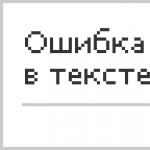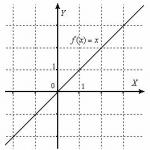How to calculate the labor participation rate. KTU. Labor participation coefficient: calculation and procedure for determining funds. Criteria that reduce performance
The labor participation rate is a value set at the discretion of the employer. The main factors in its application are two main factors:
- It should not worsen existing legislation.
- Can only be used in collective work.
When applying the KTU, it is important to understand that this coefficient is not a substitute for mandatory payments, but can be regarded as an additional incentive or is the basis for complete replacement tariff payment.
To decide on the formula for calculating the indicator, you must first decide what kind of value it is.
First of all, this is a way to individually calculate personal achievements in. This indicator may become the basis for the formation wages, but it should be understood that with low coefficients the employer will not be able to reduce the level of payments below those stipulated in employment contract at the beginning of work interaction. Accordingly, this value is very problematic for use in calculating the basic salary. On the other hand, the calculation of the KTU allows many employers to stimulate workers who seek to improve their work skills.
Most often, this coefficient is used to determine payments such as:
- for production of products in excess of the established standard.
- A one-time payment, which is accrued based on the results of revision of standards or deadlines.

Where is the coefficient applied?
The labor participation rate is a rather specific tool. The fact is that its use is possible only in work collectives that perform some kind of work together. That is, in such a team, everyone seems to be doing the same job, but the effectiveness of such collectivism, as a rule, is always different. Output should be assessed based on the quantity of products produced over a certain period of time. Most often, the calculation period is considered to be a month, but it also happens differently. For example, a team may be working on a project, and the monetary result is achieved only after the final delivery of the finished product. In this case, everyone can be paid a basic salary every month, and an additional payment is given based on the results achieved.
It is impossible to apply this coefficient outside of team work. In addition, this value cannot be replaced by:
- Payment for overtime hours worked.
- Payments for working on weekends and holidays.
- Additional payments.
- Compensation for night work.
- Allowances for length of service and qualifications.
- Additional payments for mentoring or leading a team.
- Rewards for rational proposals made.
The labor participation coefficient is calculated to individualize the merits of each team member in the team.
Impact on wages
The basic indicator of this coefficient is unity. That is, this is exactly the amount of payments due to an employee who fulfilled his work standards in full, without increasing or decreasing them.

These levels are prescribed in the general regulatory documentation of the organization. The employer is obliged to take into account that the establishment of minimum values should not violate legal norms by reducing the required payment for time worked. For example, in the Regulations you can determine that the minimum possible value is 0.5 and the maximum is 2.0. This definition is rather conditional, and each individual case considers its own values.
Thus, the employee will receive the established minimum wage for his work in any case, but in order to increase it, he will have to fulfill a series of additional events. There are quite a lot of factors that influence the increase or decrease of the coefficient, but each individual organization can apply them selectively and not in full.
Calculation rules
The labor participation coefficient is a value for the calculation of which a special formula is used. If you want to calculate the KTU, you must:
- Calculate the amount to be distributed among the team members.
- Find out the number of team members into whom the due amount will be divided.
- Calculate the coefficient of each individual employee based on the results of the period worked.
Let's look at an example. A team of four people produced products for a month. As a result, they calculated the following coefficients:
- The 1st employee received 1.
- The 2nd employee earned 1.5.
- The 3rd person is rated 1.2.
- The 4th employee received only 0.7.
The final indicator is 4.4, and the amount to be distributed is 42,000 rubles.

When determining salaries, companies often take into account the contribution each employee makes to the overall cause of the organization. For this purpose, the labor participation coefficient (LFC) is used. It is a quantitative value determined by each employer.
This coefficient determines the degree of contribution of one employee to general work companies. The indicator is used when collective organization labor process, since the result is achieved exclusively through the joint efforts of all specialists.
In this case, the salary is determined separately for each employee based on the efforts invested. Therefore, it is the KTU that acts as a certain measure that allows us to determine the optimal salary for each specialist.
Through the use of such a coefficient, it is used in the company, since the salary is determined for each employee separately, taking into account the products produced or work performed. Most often, KTU is found in teams.
pros
The use of CTU has certain advantages. These include the fact that the work of each specialist is fairly and correctly assessed based on general indicators team.
Each employee working in a team can count on advanced training, a high salary, or the exercise of initiative, since his work is evaluated separately from the results of other specialists.
Why is KTU used? Watch the video:
Important! When using CTU, it is possible to hold individual workers responsible for certain situations accountable, rather than punish the entire team.
Minuses
The use of this coefficient has some disadvantages. This includes the fact that the team's superior performance is assessed subjectively. Due to the fact that each specialist wants to stand out from other employees, not very good relationships develop in the team.
Nuances of using the labor participation rate
This coefficient can be used not only if the company uses a tariff-free system, since it is often used for distribution that is not included in existing tariffs.
Therefore, the KTU may be taken into account when calculating payments:
- bonuses assigned in a situation if an employee achieves certain high performance results;
- one-time transfers that can be paid at the end of the year or after completing a complex order.
Under such conditions, initially the amount required to pay wages according to tariffs is deducted from the salary fund. The remaining amount is distributed among employees based on the assigned KTU.
How is payment distributed?
KTU is applied based on the available form of remuneration:
- . Under such conditions, the amount that should be paid in full to the entire team is divided equally among all employees. The resulting average is 1, so it is further adjusted taking into account the KTU.
- Tariff system. In this case, all employees receive payment based on established tariffs. The remaining funds are distributed among all specialists on the basis of the KTU.
 What is KTU? Photo: ppt-online.org
What is KTU? Photo: ppt-online.org In both of the above situations, there is confidence that all specialists will try to improve their performance in order to earn higher earnings.
Where it is impossible to use KTU
There are certain conditions under which it will not be possible to use the KTU when calculating the salaries of specialists. The main condition for the use of CTU is the presence of a team in which all employees perform similar actions.
The KTU cannot be used when assigning the following payments to employees:
- compensation awarded for work in hazardous conditions;
- amounts assigned for mentoring or team management;
- behind ;
- additional payments for work on weekends or holidays, as well as at night;
- awards for discoveries or rational suggestions;
- bonuses for length of service or advanced training;
- various benefits.
When assigning the above payments, the KTU cannot be taken into account.
Who sets the odds?
There is no special regulation in the legislation on the calculation of wages based on the KTU, therefore it is the employer, together with the team, who establishes the rules for the use of this method of payment.
Different algorithms can be used, but they should not violate the requirements of the Labor Code.
 What influences KTU? Photo: konspekta.net
What influences KTU? Photo: konspekta.net Regardless of the distribution of funds, it is not permissible for the amount received by each employee to be less than the established rate for the work performed during a specific period of time.
Calculation nuances
The basic size of the KTU is 1, therefore, under such conditions, it is established that a particular employee performed the work based on existing requirements and standards. At the same time, he did not make any mistakes that led to a deterioration in the quality of the result.
What is the lump sum wage system and when is it used? Read.
During calculation, the figure can vary from 0 to 2. If 0 is applied, then the particular employee did not perform labor activity or made a serious mistake.
If 2 is used, then the specialist exceeded the norm or promptly completed the task.
To determine the KTU correctly, it is advisable to take into account the following features:
- complexity of work activity, so if the work is hard, then 3 points are assigned, and if it is easy, then 1 point is applied;
- waste of time;
- quality of the result obtained;
- work using complex or light equipment;
- employees' responsibility for the results of their work.
Important! Most often, accountants use special computer programs to clearly see all the indicators for calculations.
When the indicator goes up or down
There are certain factors that directly affect the CTU. They can increase or decrease it.
Increased criteria include:
- the team independently masters new technologies, which reduces the waste of time and effort on work;
- efficiency increases, which leads to a reduction in the duration of the task;
- complex processes related to combining professions are carried out;
- specific tasks are performed that do not correspond to the qualifications of workers.
How is salary calculated taking into account the KTU? Answer in video:
Decreasing factors include:
- the team was unable to complete the task within the established time frame;
- the order is not fulfilled;
- a defect is revealed as a result;
- employees violate the rules for using equipment;
- damage to instruments and apparatus is caused;
- the team is engaged in activities that do not comply with the requirements and standards of the company and the law;
- disciplinary violations are identified;
- workers skip work.
All of the above factors must be taken into account by accountants when calculating KTU. Violations and errors must be officially recorded, for which appropriate documents are drawn up and signed by all team members.
Is it worth entering hourly pay labor? See by.
An employer cannot simply use different reduction factors if there is no corresponding official evidence of existing violations, since under such conditions the team can file a complaint with a trade union or labor inspectorate.
Conclusion
KTU is considered an important coefficient that is effectively used in different teams where workers perform identical work. It allows you to determine the invested efforts of each specialist in the result of the activity.
Its size is affected by different decreasing and increasing factors. Employee salaries depend on the correct calculation of the CTU. This coefficient can be used for both tariff and piecework wages.
Payment according to established tariffs is not the only way calculation of remuneration for labor. The non-tariff method provides for special labor accounting forms contributed by each individual employee. It is usually used if the result of work is the fruit of collective efforts.
Allows you to evaluate the achievement of each individual employee and calculate remuneration on this basis.
How is this coefficient calculated, in what units is it recorded, how earnings are distributed using the KTU and other subtleties related to collective work and its payment, we consider in this article.
Why is KTU needed?
Labor participation rate (LCR) – quantitative indicator, characterizing the degree of contribution to the overall labor process and the result of each participant.
It is used in those forms of organizing the labor process that imply collective participation. The result is achieved through joint efforts, but the payment must be assigned separately, so a measure is needed that serves as the basis for the distribution of rewards.
This is one of the forms piecework payment, When monetary reward, paid to each employee, depends on the quantity of products produced (in this particular case, the products were produced by the entire team), and on the price per unit of production.
REFERENCE. Most often, KTU is used in brigade forms of labor organization, when the earnings due to the entire team for work performed are distributed depending on the time worked and the qualifications of each employee.
KTU at established tariffs
The labor participation coefficient is taken into account not only when organizing the payment of labor remuneration without tariffs. Another area of application of the CTU is the distribution of part of the labor remuneration fund, which is not included in the established tariffs. Such components of wages may include:
- a bonus paid for achieving any indicators above the norm;
- saving money from the salary fund;
- a one-time payment as a result of revision of temporary or other standards, etc.
With such an accrual, the part that is due under the tariffs is deducted from the earnings of the entire team, and the remaining amount is distributed in accordance with the KTU.
IMPORTANT! Whether tariffs are applied in a given labor organization system or not, KTU can only be applied in a collective form of work.
Distribution of funds by KTU
Depending on the form of payment for group work, the KTU is applied as follows:
- with a tariff-free system: the total amount intended for payment for the entire team is divided by the number of workers, and then this average indicator, corresponding to indicator 1, is adjusted based on the KTU;
- when distributing payment in excess of tariffs: employees receive a “fixed” amount according to the tariff, and the remaining funds are divided taking into account the KTU.
Where KTU cannot be used
Teamwork is the main condition for the use of CTU. The labor participation rate cannot be applied to any form of individual payments. Forms of remuneration where the CTU is fundamentally inapplicable include:
- compensation for hazardous work;
- overtime payments;
- additional payment for working on a holiday or day off;
- money for work on the night shift;
- additional amounts for supervision, mentoring, leadership of a team or department;
- bonuses for qualifications and experience;
- awards for improvement proposals or professional discoveries;
- all types of benefits.
Who installs KTU
The Labor Code of the Russian Federation does not have regulations regarding the calculation of earnings according to the KTU; this issue is left to the discretion of the workforce. The algorithm can be anything, the main thing is that it does not contradict the current provisions Labor Code and other legislative acts.
IMPORTANT INFORMATION! No matter how the earnings are distributed, the amount received by each member of the team cannot be less than what is required according to the tariffs for such work performed within a specified period of time.
Digital value of KTU
The basic value of the labor participation coefficient is taken as one. Index 1 means that a member of the work team, performing joint work, fulfilled all the requirements, was able to comply with the standards for temporary, quantitative and qualitative characteristics, while not making mistakes that worsened the overall result, and strictly complied with the requirements of discipline and labor protection.
When calculating, the resulting figure may be in the range from 0
(a team member did not participate in the general work or allowed serious violations, reducing its overall benefit to nothing) to
2
(more was completed than required by the time, quantity and quality standards).
At the end of each period of work of the team (team), the KTU of each worker is calculated using a special protocol according to the established methodology. KTU criteria should be established as objectively as possible (they can be “specific” for each individual enterprise).
Formula for calculating the labor participation rate
To calculate the CTU, you need to use a system of established parameters, each of which is assigned its own “score”. The employee is assessed for each parameter, receiving a certain number of points for each in turn. The number of points is summed up.
To apply the formula, you also need to know the exact number of employees into whom the total participation will be divided. The calculation can be done like this:
KTU = (O / O1 + O2 +…+ Оn) x N
- KTU – labor participation coefficient;
- O – rating assigned to the employee whose participation rate is being calculated;
- О1 + О2 +…+ Оn – sum of points of all employees;
- N – number of team members.
Features of calculating KTU
Let’s imagine a team for which the following parameters for assessing its work have been developed:
- complexity of the work (on a three-point scale: the most difficult work - 3 points, average - 2 points, easy - 1 point);
- time load (maximum – 3 points, average – 2 points, minimum – 1 point);
- work on equipment (1 point for each type);
- equipment maintenance (2 points for each case);
- quality (1 point for compliance and 1 point for control);
- responsibility for results (up to 3 points, may be deducted for violations).
Convenient for KTU calculations computer program Excel, where all indicators are visible in tabular form, and the last column displays the total for each employee.
An example of remuneration calculation according to KTU
Let our conditional team have five workers engaged in making stools for a set time period. For the implementation of the plan, their team is entitled to payment of 1000 monetary units (let’s take a conditional value for calculations).
First employee fully fulfilled the plan, complied with all standards, having worked the required number of working hours, that is, his KTU is equal to 1.
Second worker exceeded the norm by a quarter, the rest of the indicators are the same as the first. KTU will be 1.25.
Third employee fulfilled the norm, but due to his fault (failure to comply with the rules for working with equipment), the woodworking machine was broken, which forced the suspension of work. In addition, he was late for the start of the work day several times. Therefore, several points were deducted from him, and his CTU was 0.5.
Fourth employee I fixed a breakdown in a woodworking machine; my qualifications allowed me to do this. He was given points for equipment maintenance; in addition, management noted the quality of his work, and his KTU turned out to be 1.6.
Fifth employee I asked for time off on the last day of work. His work did not cause any complaints, but in fact he worked somewhat less than the others, so the KTU decreased to 0.65.
Now let’s calculate the share of each employee that he will receive with a non-tariff payment method, or the additional remuneration due as extra income, with an established “fixed” tariff.
The sum of all KTUs: 1 + 1.25 + 0.5 + 1.6 + 0.65 = 5.
With tariff-free payment, the total amount will be distributed as follows: 1000 / 5 = 200 (average share corresponding to a KTU unit). Then employees are entitled to:
- The 1st employee will receive 200 (account units);
- 2nd – 200 x 1.25 = 250;
- 3rd – 200 x 0.5 = total 100;
- 4th – 200 x 1.6 = 320;
- 5th – 200 x 0.65 = 130.
Thus, thanks to KTU, earnings were distributed unevenly, with some employees receiving significantly more than others. However, this is due to objective factors, and therefore will not cause a feeling of injustice and discontent in the team.
The labor participation coefficient shows the measure of labor participation of an individual employee in overall result brigade, production team. This is a generalized quantitative assessment of the labor contribution of an individual specialist. The use of KTU prevents the subjective assessment of each employee’s contribution to the common cause and the emergence of conflicts regarding the calculation and payment of wages.
Application of the labor participation rate
The basic value of the KTU is 1 or 100. This value applies to accruals to employees who, in the billing period:
- completed the task;
- followed the requirements for production technology, quality, labor safety;
- observed labor discipline;
- complied with job responsibilities, work instructions.
The base coefficient increases or decreases depending on indicators reflecting the individual contribution of a specialist to the collective result of work. Each organization determines the individual dimensions of the CTU. The decision is made by the brigade council (meeting) and documented in the appropriate protocol.
Subsequently, daily records of indicators are kept and the overall KTU is calculated.
Criteria that can reduce the size of the coefficient:
- failure to comply with the manager's instructions on time;
- violation of production technology;
- failure to fulfill the plan and established economic indicators;
- marriage, low quality works;
- violation of labor discipline;
- non-compliance with labor protection requirements; performing work without appropriate instructions, work permits, or personal protective equipment;
- use of faulty tools, equipment, faulty equipment;
- use of equipment for purposes other than its intended purpose, etc.
Indicators that increase the value of KTU:
- manifestation of initiative, creative activity when performing production, organizational and technical tasks;
- solving a complex and responsible problem;
- performing work in a short time;
- mentoring, etc.
KTU is most often used for piecework wages. The tariff part is calculated according to hourly tariff rates and time worked. The bonus and payment according to the labor participation coefficient are paid from the above-tariff part of the payroll (above-tariff part of the salary).
With the use of KTU, the following additional payments can be distributed:
- bonus for labor achievements (for exceeding the norm);
- one-time remuneration in connection with changes in standards;
- salary savings associated with the release of personnel.
The above-tariff salary, distributed according to the coefficient, is included in the cost of production.
Labor participation rate: formula in Excel
Actual labor indicator = basic KTU + SC (sum of increasing / decreasing criteria).
Basic – 1 or 100. Reducing criteria for assessing labor contribution are subtracted from the basic labor indicator. Raising ones are added.
Example problem. A team of 4 employees works in the woodworking shop. They have 3 types of equipment at their disposal. Salaries are calculated using the KTU. A system of increasing and decreasing criteria has been developed.
To calculate individual KTU, a separate table is compiled:
A separate table is filled out for each reporting period. The final indicator is the sum of the basic and increasing/decreasing criteria.

To understand how wages are calculated using the KTU, let’s distribute the above-tariff part of the payroll among team members. Let’s assume that for May this brigade is given an amount of 65,000 rubles. This figure must be divided by the sum of the KTU for all employees and multiplied by the individual labor participation coefficient.

Let’s add the “Total” line to the table and calculate the sum of the coefficients of all employees (SUM function):

We calculate the bonus for labor achievements using the formula:

To this figure it remains to add the tariff part, calculated based on time worked and hourly tariff rates.
If remuneration is carried out at standard rates, the KTU can be used when calculating, and you can find out what it is from this article.
KTU: concept and scope of application
KTU - coefficient of labor participation of employees in professional activity. Each team member contributes to the work. To evaluate the employee’s work, the concept of KTU was additionally introduced.
This value is determined in numbers to evaluate the employee’s work. This indicator is used to set increased or decreased wages, but it all depends on the employee himself.
The team must make a joint decision on the procedure for using the coefficient. In order for everything to be done correctly, it should be announced which coefficients are assigned to which employees, and the foreman does not need to do everything himself. Based on the results of the meeting, a protocol is drawn up.
Cases of decreasing the coefficient:
- the manager’s tasks were not completed at all or were not completed on time;
- violation of the route of operations during the execution of the technological process;
- failure to implement the approved work plan;
- failure to fulfill one of the points of the plan;
- allowing defects in work;
- quality does not meet standard requirements;
- violation of technological discipline;
- the work was carried out without permission and without instructions;
- use of faulty equipment;
- use of technological equipment for other purposes;
- failure to use PPE;
- violation of occupational safety requirements;
- providing false information;
- others.
An increase in KTU is carried out in the following cases:
- manifestation of activity in work;
- issuing initiative proposals;
- execution in short term responsible task;
- and other criteria.
Additional payments when using KTU are distributed:
- As a bonus.
- From funds saved on the salaries of other employees.
When not to use KTU

In what cases does KTU not apply?
Collective work is the main condition for using this coefficient. But it is not always used; it cannot be used under the following circumstances:
- when accruing compensation payments for working under conditions;
- when calculating wages for overtime work;
- additional payment for work on holidays and weekends;
- with established additional payments when working at night;
- if, when calculating wages, an additional payment to the foreman is established;
- with individual bonuses for employee qualifications;
- when calculating bonuses;
- other types of benefits.
Payroll for all listed cases is carried out separately and KTU cannot influence this circumstance in any way.
How funds are distributed
IN legislative framework There are no clear and transparent definitions of how payments under the CTU are established. are produced by the enterprises themselves, in the most acceptable ways, but it is important to know that this point does not contradict the law.
For a certain category of qualified employees, there should not be a downward change in wages when using KTU. That is, the employee must at least receive his tariff.
KTU is also used:
- With the introduction of a tariff-free system. The payment amount is divided by the number of employees working together. In this case, the average coefficient is one, and is adjusted on the basic basis of the KTU.
- Distribution of the amount of wages over the tariff. Employees receive wages in excess of tariff accruals, and then distribute the remaining amount to all employees.
How is the calculation done?

Formula for calculating KTU
The calculation of the KTU is carried out on the basis of established parameters, in which their own points are assigned for each nuance. These points are then summed up.
To use it correctly, you need to know the number of people in the team. The calculation itself can be done like this:
KTU = (0/1+n) * N,
where 0 is the parameter estimate for each member of the work team;
1+n is the total amount of points awarded;
N is the number of members of the work team.
To calculate the CTU, the following factors are taken into account:
- The complexity of the work functions performed.
- Working with complex equipment.
- Maintenance of equipment and fixtures.
- Qualitative characteristics of the work performed.
- Responsibility for the result.
Each criterion has its own scores.
Example calculation
To understand how to calculate the CTU, the following example can be given.
One team employs 5 people at the same time. If they fulfill 100% of the plan, they are entitled to payments of 1000 rubles.
One of the workers completely completed the task; he complied with all standards, did not violate technological discipline and followed the rules. The second worker was also diligent in completing his task, but at the same time he also exceeded his standard by 0.25, that is, his KTU will be 1.25. The third worker also coped with the task, but the machine equipment was broken, and he was also noticed more than once as being late. Its KTU is 0.5. Next employee repaired machine equipment. and received KTU 1.6. The fifth employee did not work on the last day due to circumstances beyond his control, so he was assigned a KTU of 0 0.65.
- The first employee is entitled to 200 rubles.
- The second - 200 * 1.25 = 250 rubles.
- The third - 200 * 0.5 = 100 rubles.
- The fourth - 200 * 1.6 = 320 rubles.
- Fifth - 200 *0.65 = 130 rubles.
The total amount should be 1000 rubles.
Advantages and disadvantages of the system

Advantages and disadvantages of using KTU
The system of using CTU has its pros and cons.
Advantages of KTU:
- the activities of all team members are carried out;
- It makes sense for every employee to improve their work performance;
- stimulating employees to improve their skills;
- incentive to increase initiative;
- reasoned possibility of punishing employees;
Disadvantages of the system:
- the assessment is made subjectively;
- the psychological system of relationships between employees may be disrupted.
Only after weighing all the advantages and disadvantages of the system is it necessary to think about how to introduce the CTU.
Features when introducing CTU at an enterprise
The introduction of the KTU system is determined at each stage based on individual characteristics technological process.
For example, the manager evaluates the work of engineering and technical workers independently every month and does not need to ask advice from colleagues.
If several team members carry out activities at the same time at a production site, then the foreman sets the coefficients.
If wages are reduced or increased due to the use of CTU, the employee must be informed in writing. As a rule, an administrative document for the enterprise is published.
According to the established standards of the KTU and how to apply them, it is recommended that enterprises issue a standard or regulation regarding this area.
For information about the labor participation rate, see this story:
Form for receiving a question, write yours






